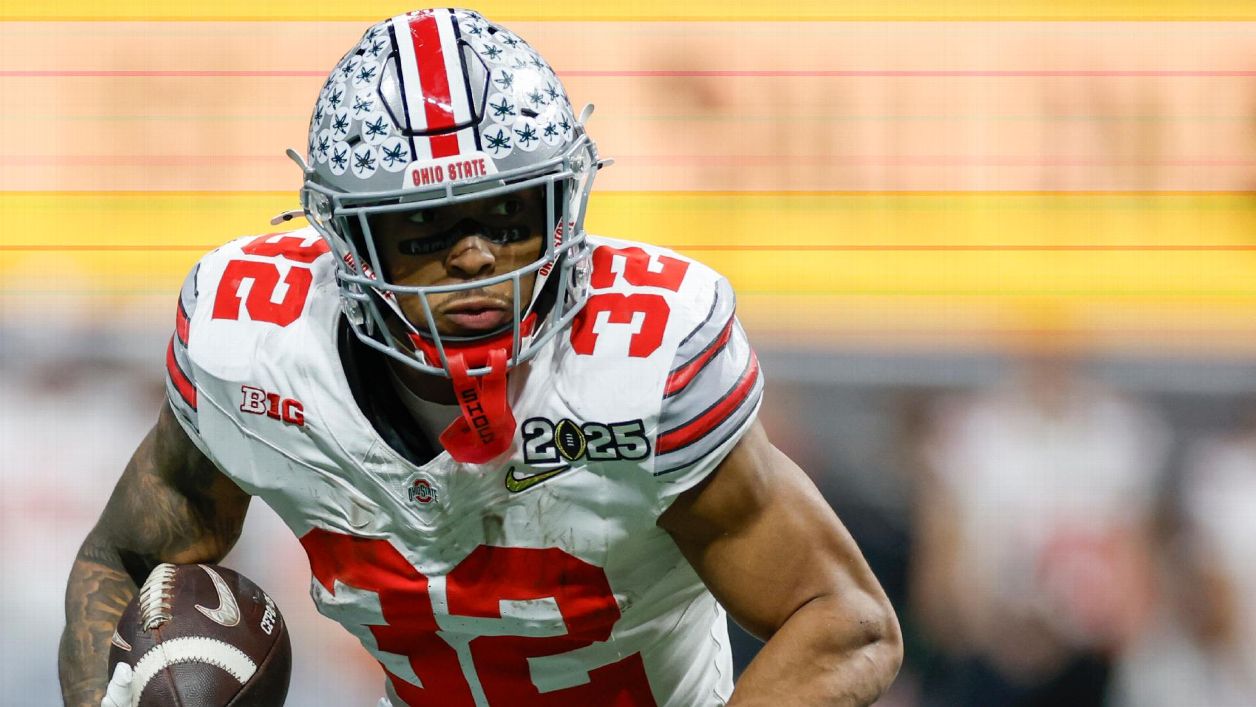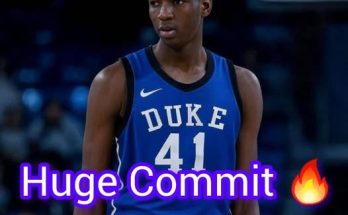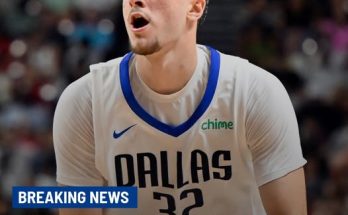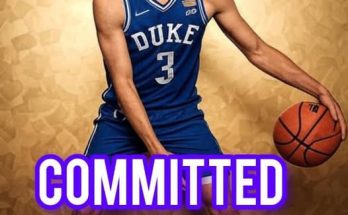After another season that ended short of the ultimate goal, the Dallas Cowboys enter the 2025 NFL Draft with a familiar mix of urgency and opportunity. With a solid roster headlined by stars like Micah Parsons and CeeDee Lamb, the Cowboys aren’t in full rebuild mode—but they have more than enough holes to fill if they plan on ending their Super Bowl drought. The draft offers the chance to add impact talent, reshape key positions, and reinforce depth across the board. In this mock draft simulation, we project how the Cowboys’ draft could unfold, assuming they stay put at their current picks and operate under their known tendencies.
The Cowboys begin with the 24th overall pick in the first round. At this spot, several intriguing names should be on the board, but none may make more sense than Graham Barton, the versatile offensive lineman from Duke. Dallas has been plagued by offensive line inconsistency and age-related concerns, especially at left tackle and center. Barton gives them flexibility—he played left tackle at Duke but projects as a starting-caliber guard or center at the next level. With Tyler Biadasz departing in free agency and questions around Tyron Smith’s longevity, Barton is a logical choice. He’s technically sound, intelligent, and nasty in the trenches, checking all the boxes the Cowboys covet.
Round two sees the Cowboys looking to add more offensive firepower. Michael Wiley, the running back out of Arizona, becomes the pick. While Dallas added Royce Freeman and still has Deuce Vaughn as a change-of-pace option, they need a back who can carry a real workload. Wiley is a smooth runner with strong vision and the ability to contribute in the passing game, both as a receiver and blocker. He’s not a home-run hitter in terms of speed, but his reliability and toughness fit what Mike McCarthy wants in his offense. He can step into a committee role immediately, with a clear path to earning more carries as the season progresses.
In the third round, Dallas turns to the defensive side of the ball, selecting Ohio State cornerback Denzel Burke. The Cowboys have Trevon Diggs returning from injury and DaRon Bland coming off a breakout season, but the depth behind them is shaky. Stephon Gilmore’s return remains uncertain, and Jourdan Lewis is aging. Burke offers size, athleticism, and upside. He’s physical in press coverage, shows natural instincts in zone, and plays with the confidence of someone who’s been battle-tested in the Big Ten. His addition solidifies the cornerback rotation and provides insurance if Diggs or Bland misses time.
In round four, the Cowboys address their linebacker corps with a player they know well—Jaylan Ford from Texas. He’s a downhill thumper who brings intensity and sure tackling to the middle of the defense. While Ford doesn’t have elite speed, he reads the game well and rarely misses his gap assignments. Dallas has seen linebacker play deteriorate in recent years, especially after the departure of Leighton Vander Esch. While Damone Clark and DeMarvion Overshown offer promise, Ford adds another dependable presence who can thrive on early downs and contribute immediately on special teams.
The Cowboys continue to prioritize defense in round five, selecting defensive tackle Khristian Boyd from Northern Iowa. A powerful interior presence, Boyd dominated at the FCS level with a combination of quickness off the snap and leverage strength. Dallas has invested in its edge rushers, but the interior line remains a work in progress beyond Osa Odighizuwa and Mazi Smith. Boyd brings juice to the rotation and gives Dan Quinn another disruptive body to throw into the mix on passing downs.
With a compensatory pick later in the fifth round, Dallas shifts back to the offensive side and selects wide receiver Jha’Quan Jackson out of Tulane. A dynamic slot weapon with special teams ability, Jackson is a spark plug who can help stretch defenses horizontally and vertically. While the Cowboys have a solid top three in Lamb, Brandin Cooks, and Jalen Tolbert, they lack depth and explosiveness behind them. Jackson offers both. He’s a slippery route-runner with return potential, someone who can develop into a gadget weapon and core contributor in year one.
Entering round six, Dallas targets depth at safety with the selection of Auburn’s Zion Puckett. Puckett is a physical, box safety type with leadership qualities and a high football IQ. He may never be a centerfielder in coverage, but he adds toughness and sound tackling to the back end. With Donovan Wilson and Malik Hooker in place, Puckett can carve out a role in sub-packages and on special teams, with the potential to eventually challenge for more snaps in run-heavy schemes.
Later in the sixth round, the Cowboys look for a developmental quarterback and find one in Coastal Carolina’s Grayson McCall. Once viewed as a high-upside prospect, McCall saw his stock dip due to inconsistency and scheme limitations, but the tools remain intriguing. He’s mobile, has a compact release, and brings moxie. Dallas is set with Dak Prescott for now, but Cooper Rush and Trey Lance remain question marks long-term. McCall is a low-risk, high-upside flyer who could thrive with time to develop.
The Cowboys finish off their draft in round seven with a pick that reflects their long-term needs: tight end Tanner McLachlan from Arizona. McLachlan is more receiver than blocker, but he gives Dallas another vertical option behind Jake Ferguson and Luke Schoonmaker. He has reliable hands, understands spacing, and works well up the seam. As defenses key on CeeDee Lamb and the perimeter threats, having another pass-catching tight end with McLachlan’s skill set adds a nice wrinkle to the offense.
If this mock draft were to come to fruition, the Cowboys would emerge with a group that addresses key depth concerns while also providing upside at critical positions. Barton stabilizes the offensive line and gives flexibility for future adjustments. Wiley shores up the backfield, and Jackson adds speed at receiver. On defense, Burke, Ford, Boyd, and Puckett bolster a unit that has shown flashes but lacks consistent depth. McCall gives them a developmental passer, and McLachlan adds another layer to the tight end room.
This draft class wouldn’t be the flashiest, nor would it generate the kind of media buzz Cowboys owner Jerry Jones often enjoys. But it would be quietly effective—built around fundamentals, versatility, and toughness. There’s no overdrafting of luxury picks or splashy trades, just solid team-building with an eye toward longevity.
Much of the Cowboys’ recent postseason frustration has stemmed from their inability to consistently match up in the trenches, especially against the league’s elite. This class takes clear steps toward fixing that, particularly with Barton and Boyd on the lines. It also shows faith in the current core while reinforcing areas of concern that have been exposed in the playoffs—particularly at linebacker and cornerback.
The Cowboys still need internal development to get over the hump. They need Prescott to play his best football when it matters most. They need Parsons to continue being a game-wrecker and the offensive stars to deliver in big moments. But the best way to build a sustainable winner is through the draft, and this mock scenario demonstrates a blueprint that leans into their identity while adapting to the evolving landscape of the NFL.
In short, the Cowboys don’t need to reinvent themselves this draft. They just need to keep stacking smart picks—players who can contribute early and grow into leaders later. This simulation reflects that approach, and if executed properly, could be the class that helps Dallas finally take the next step. Maybe not in April headlines, but when it counts in January.



